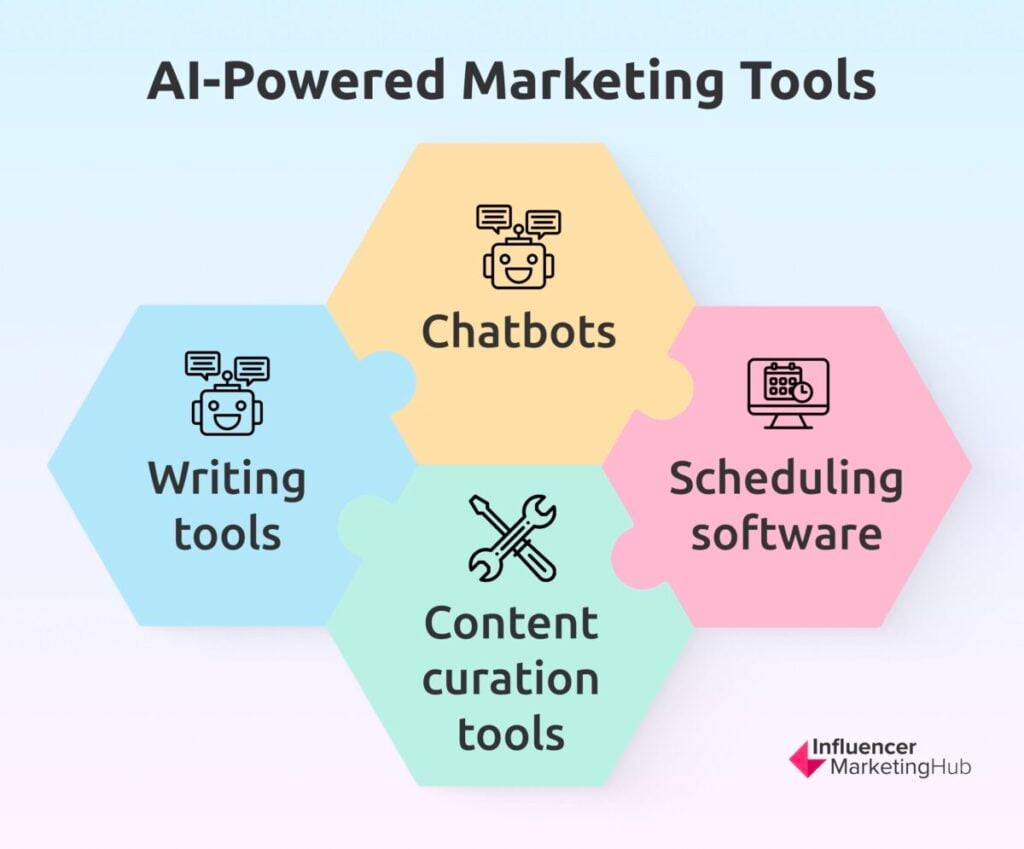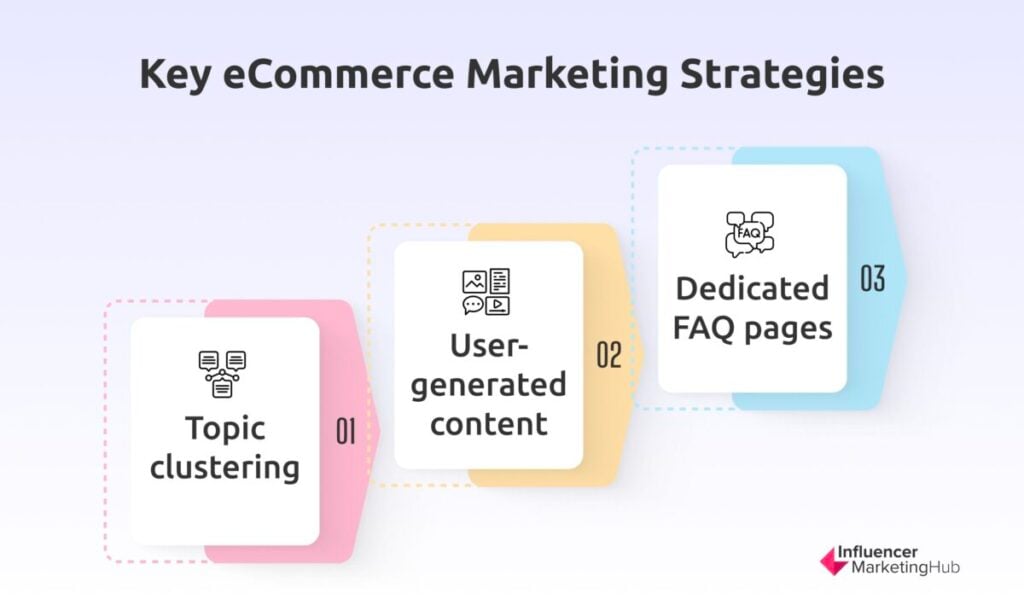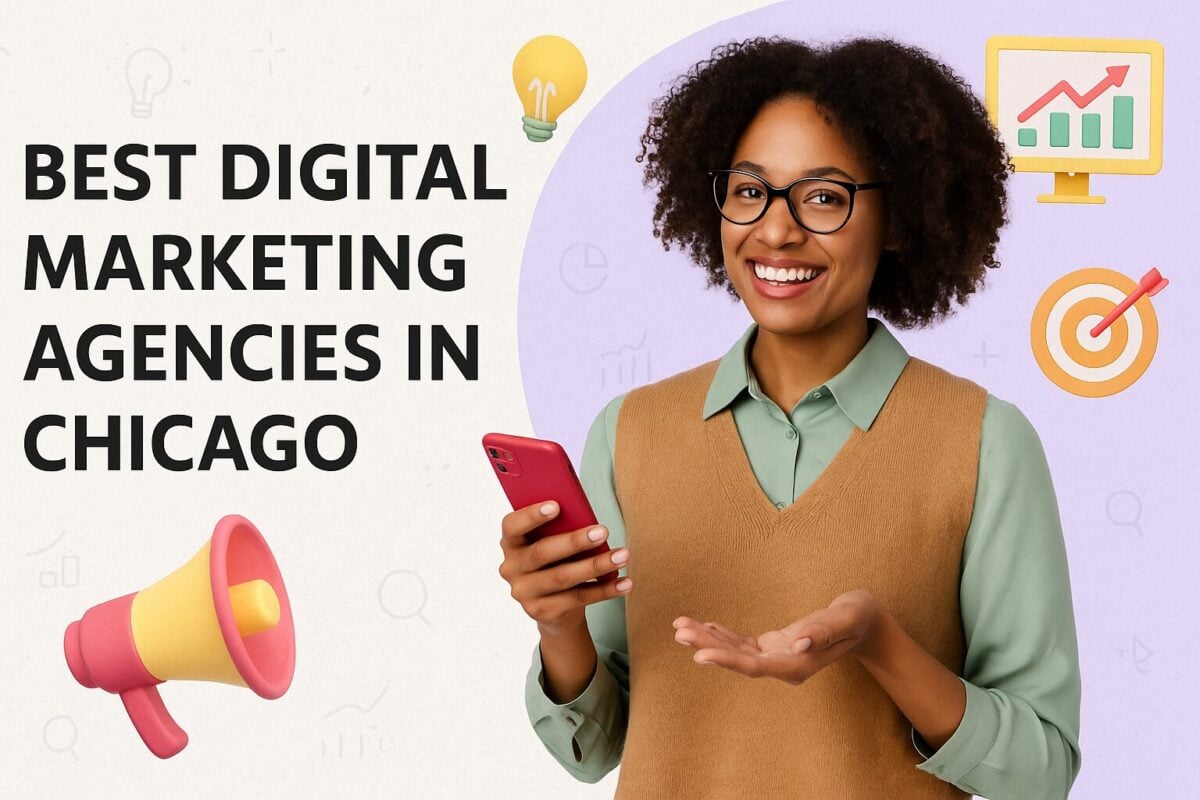Just like any other industry, marketing is also full of jargon. Some words, such as analytics and return on investment, are used by other sectors too. Other terms, like search engine marketing and social listening, are unique to marketing.
To help avoid misunderstandings and ensure everyone is on the same page, we’ve created this list of important digital marketing terminology. There are hundreds more terms that can be added, but if we did, you’d spend all day reading instead of implementing them into your marketing activities.
Whether you’re an aspiring marketer looking to land a job at one of the top digital marketing agencies in the USA or a business owner, here are the essential terms and acronyms to memorize. For ease of use, the terms are sorted in alphabetical order.
Must-know Digital Marketing Terms to Bookmark in 2024:
- 1. A/B testing
- 2. Affiliate marketing
- 3. Analytics
- 4. Artificial intelligence
- 5. Bounce rate
- 6. Brand positioning
- 7. Call to action
- 8. Click-through rate
- 9. Competitive analysis
- 10. Content marketing
- 11. Conversion rate
- 12. Conversion rate optimization
- 13. Customer acquisition cost
- 14. Customer lifetime value
- 15. Customer relationship management
- 16. Impression
- 17. Key performance indicators
- 18. Landing page
- 19. Lead generation
- 20. Omnichannel marketing
- 21. Pay per click
- 22. Personalization
- 23. Return on investment
- 24. Search engine marketing
- 25. Search engine optimization
- 26. Search engine results page
- 27. Segmentation
- 28. Shoppable content
- 29. Snackable content
- 30. Social listening
- 31. Target audience
- 32. User experience design
Digital Marketing Glossary for 2024
1. A/B testing
A/B testing uses two different versions to measure the effectiveness of each version. It’s commonly used to test web pages, landing pages, sign-up forms, and emails, for instance, and is useful for understanding your target audience’s preferences better.
Marketing technology, like email marketing platforms and landing page builders, typically include A/B testing as a feature.
Also called: A/B split testing
Linked to: Segmentation, analytics
2. Affiliate marketing
Affiliate marketing is a popular digital marketing strategy that businesses use to reward customers (aka affiliates) for attracting new customers. The affiliates typically do this by sharing content on their social media profiles or personal blog. The reward is usually commission-based.
Businesses can either use an affiliate marketing tool to automate many steps involved or entrust it to a digital marketing agency.
Examples of affiliate marketing tools you can use include:
- Refersion
- PartnerStack
- Post Affiliate Pro
Examples of agencies that specialize in affiliate marketing are:
- Hamster Garage
- PartnerCentric
- Versa Marketing
Linked to: Lead generation
3. Analytics
Analytics are used to measure the effectiveness of a marketing campaign and gain valuable insights that can be applied to the next campaign. It’s based on data generated by means of social media tools, for instance.
Examples of analytics tools that you can use are:
- Brand24
- Talkwalker Analytics
- Google Analytics
Also called: Marketing analytics, digital marketing analytics
Linked to: A/B testing, key performance indicators, segmentation
4. Artificial intelligence
When used in terms of marketing, artificial intelligence refers to when a tool mimics human intelligence to automate processes like data analysis with the goal of improving productivity, reducing costs, and improving the customer experience.
Examples of marketing tools that leverage artificial intelligence include:

- Chatbots
- Scheduling software
- Content curation tools
- Writing tools
Also called: AI
Linked to: Content marketing
5. Bounce rate
To understand bounce rate, you first need to know what it means when a user bounces. Whenever a website visitor doesn’t take any action/visits a second web page, it’s considered as a bounce.
Your bounce rate is expressed as the percentage of website visits that don’t lead to another action. Generally, a lower rate is better. That said, it’s normal for certain pages that serve a specific reason, like your contact page, to have a higher bounce rate.
Linked to: Analytics, call to action, user experience design
6. Brand positioning
Brand positioning refers to the process of building a unique identity for your brand to help set it apart from competitors. Specific attention is paid to elements like tone of voice, logo, and visuals.
Examples of the top digital marketing agencies that can help small businesses with their brand positioning include:
- NinjaPromo
- Ironpaper
- Blu Mint Digital
Linked to: Content marketing, target audience, omnichannel marketing
7. Call to action
Calls to action instruct users about which desired action they’re supposed to take next, guiding them through the customer journey. It usually takes the form of a banner, button, or short text.
Popular examples of calls to action include:
- Join the waiting list
- Sign up for the free 14-day trial
- Buy yours now
Also called: CTA
Linked to: Click-through rate, shoppable content, content marketing
8. Click-through rate
Click-through rate refers to the percentage of clicks a digital marketing campaign generates. In other words, it measures the percentage of people that click on a link in, for example, an email newsletter or social media post.
To work it out, you divide the campaign’s number of clicks by the total campaign impressions and multiply that answer by 100.
It’s useful for evaluating a campaign’s effectiveness. A high CTR indicates that the target audience resonated with the content.
Also called: CTR
Linked to: Impressions, analytics, PPC
9. Competitive analysis
Competitive analysis refers to a strategy that closely looks at who your main competitors are and then identifies their positioning, offering, marketing and sales strategies, and strengths as well as weaknesses. It helps you to identify and tweak your unique selling proposition, uncover which strategies work, and understand the needs of your target audience.
Examples of tools that you can use to collect competitive intelligence include:
- Brandwatch Consumer Intelligence
- Similarweb
- Semrush
Also called: Competitor analysis
Linked to: Brand positioning, target audience
10. Content marketing
Content marketing refers to your marketing efforts that involve creating and distributing digital content. From short, social media posts to long-form blog posts to visual/audio content like podcasts and webinars, it covers various types of content.
The goal of content marketing is usually to improve brand awareness and engagement, helping the business to generate qualified leads and encourage customer loyalty.
Examples of popular eCommerce marketing strategies include:

- Topic clustering
- User-generated content (UGC)
- Dedicated FAQ pages
Linked to: Impressions, landing page, lead generation
11. Conversion rate
Conversion rate refers to the percentage of your customers, email subscribers, leads etc. that complete a specific action. This action doesn’t necessarily need to be to buy a product and it can also include actions like joining your email marketing list, signing up for a free trial, or scheduling a demo.
It’s one of the most popular ways to measure a marketing campaign’s performance. That said, when measuring your conversion rate, it’s important to take your industry and platform into account. The average conversion rate can differ from one industry/marketing platform to the next.
To work out your conversion rate, divide the percentage of users who completed a specific action by the total size of the audience (including the number of converted users).
Linked to: Conversion rate optimization, call to action, analytics, KPIs
12. Conversion rate optimization
Conversion rate optimization refers to the process of improving a website so that more visitors complete a desired action. The result is a better user experience, more quality leads, and deals getting closed faster.
Examples that specialize in conversion rate optimization include:
- Conversion
- Moburst
- PurpleFire
Also called: CRO
Linked to: Conversion rate, user experience design
13. Customer acquisition cost
Customer acquisition cost refers to what it costs you on average to get a new customer. To work out this cost, you divide your marketing expenses by your total number of customers.
Also called: CAC
Linked to: Customer lifetime value, KPIs, analytics
14. Customer lifetime value
Customer lifetime value refers to how much revenue a customer brings in for a business. To work it out, you multiply the average purchase amount by the frequency of purchases by the customer lifespan.
This number should be interpreted within the context of your customer acquisition cost. You don’t want to spend too much (or too little) on acquiring new customers.
Also called: CLV
Linked to: Customer acquisition cost, KPIs, analytics
15. Customer relationship management
Customer relationship management involves the steps that a business takes to build, maintain, and improve its customer relationships. To help with this process, customer relationship management (CRM) software is often used to manage customer data and analyze their interactions.
Examples of popular CRM software solutions include:
- Zoho CRM
- HubSpot
- Keap
Also called: CRM
Linked to: Analytics, lead generation
16. Impression
Impression refers to each time a post or other piece of content gets shown online.
Linked to: Analytics
17. Key performance indicators
Key performance indicators are metrics used to measure performance and progress towards a specific goal. They should be specific, measurable, achievable, realistic, and time-bound.
Also called: KPIs
Linked to: Analytics, bounce rate, conversion rate, CAC, CLV, ROI, CTR
18. Landing page
A landing page refers to a website page that was created for a specific purpose. Marketing teams use landing pages for specific marketing campaigns and can use it to redirect visitors to a dedicated page after they’ve clicked on a call-to-action button in an email or social media post. Here, they’ll find more specific details about the offer that you’re marketing.
Examples of popular landing page builders that you can use include:
- Unbounce
- GetResponse
- ConvertKit
Linked to: Lead generation
19. Lead generation
Lead generation is a process that involves attracting prospects and teaching them more about your industry and product/service. The goal is to create interest in your product which will hopefully convert into a sale.
In return, potential customers usually share their contact information with your marketing/sales team via landing pages, webinars, etc.
Also called: Lead gen
Linked to: Target audience, affiliate marketing, content marketing, landing page
20. Omnichannel marketing
Omnichannel marketing is a popular marketing strategy that brands use to create a seamless experience across all platforms. This way, customers will enjoy the same experience irrespective of if they’re interacting with the brand online, via their app, or in person at a physical store.
Examples of omnichannel marketing platforms include:
- Brevo (formerly Sendinblue)
- Omnisend
- HubSpot
Linked to: Personalization, user experience design
21. Pay per click
Pay per click refers to a marketing strategy where a business needs to pay each time a user clicks on one of their online advertisements. Advertisers can bid on specific keywords helping their ads to appear at the top of the search engine results page. Google Ads is an example of pay-per-click marketing.
Also called: PPC marketing
Linked to: Search engine marketing, search engine results page
22. Personalization
Personalization is a popular digital marketing strategy. It refers to the process of targeting a marketing message to a specific segment. In other words, you’ll customize your content so that it addresses that customer’s unique needs, making the content more relevant and valuable. Using personalization, you can also ensure that the message reaches the customer at the right time.
Linked to: Segmentation, content marketing
23. Return on investment
Return on investment refers to the returns that a specific marketing campaign has generated. It’s commonly used in digital marketing and many tools and software can help you to link returns to a specific campaign.
Examples of marketing agencies that have a proven track record of generating maximum returns are:
- Viral Nation
- ROI Amplified
- Single Grain
Also called: ROI
Linked to: Analytics, KPIs, ROAS
24. Search engine marketing
Search engine marketing refers to the use of search engine optimization and paid ads to improve your ranking in the search engine results page and drive more traffic to a website.
Examples of some of the leading SEM agencies are:
- Thrive Internet Marketing Agency
- SmartSites
- Disruptive Advertising
Also called: SEM
Linked to: Search engine results page, PPC, SEO
25. Search engine optimization
Search engine optimization refers to the strategies used to attract more traffic to a website without using paid ads. There are various types of search engine optimization like local SEO, eCommerce SEO, and national SEO.
For example, if you’re a business based in New York City and you want to target your local crowd, it will make sense to partner with agencies based in NYC that offer local SEO. On the other hand, if you’re located in the United Kingdom, working with UK-based digital marketing agencies will make more sense for your strategy.
Strategies that are often used include:

- Keyword research
- Competitive analysis
- Content marketing
- Link building
- On-page optimization
Also called: SEO
Linked to: Search engine results page, search engine marketing, content marketing, competitive analysis
26. Search engine results page
Search engine results page refers to the page that’s displayed after typing a word, term, or phrase into a search engine like Google or Bing. Users are more likely to click on websites that rank higher on the search engine results page, hence why businesses want to rank as highly as possible.
Also called: SERP
Linked to: Search engine marketing, SEO, content marketing, competitive analysis
27. Segmentation
Segmentation is when you divide customers into different groups using criteria like interests or needs. This way, you can target your information to make it more relevant. For example, if your using email marketing, you can use an email marketing platform or AI software tool to segment your email list for you.
Also called: Customer segmentation, market segmentation
Linked to: Personalization, target audience/market
28. Shoppable content
Shoppable content is online content that lets users purchase directly by allowing them to add the item to their cart or redirecting them to a specific product page, helping to shorten the buyer’s journey.
It’s typically a social media video/image post or ad that contains a product tag. For example, when it’s created as a shoppable post on Instagram, the user can complete their checkout process without leaving the social media platform on which it’s posted.
Linked to: Conversion rate optimization, user experience design
29. Snackable content
Snackable content refers to content that’s easy to consume. It’s typically short and contains engaging elements like a video, meme, GIF, or infographic. As it’s eye-catching, it helps to grab attention quickly and generates loads of shares and likes.
Linked to: User experience design, content marketing
30. Social listening
Social listening is the process of monitoring your social media channels for direct mentions of your business or any content containing a competitor, industry, or related topics/keywords and analyzing this data.
You can think of it as “listening in” on social media conversations. The goal is to get to know your target audience better, uncover brand sentiment (how they feel about your brand or its main competitors), identify pain points, and spot gaps in the market.
Examples of social listening tools that you can use to automate much of this process include:
- Brand24
- Sprout Social
- Brandwatch Consumer Intelligence
Linked to: Competitive analysis, target audience
31. Target audience
Simply put, the target audience of a business refers to their ideal customer. It’s the group of people they have in mind when they create their marketing strategies and content.
Also called: Target market
Linked to: Brand positioning, social listening, segmentation, competitive analysis, lead generation
32. User experience design
User experience design refers to the process of improving users’ satisfaction and interaction with a product or service. Basically, it’s about making it more functional and easier to use.
Examples of UX agencies that shine in this department include:
- Clay
- Conversion
- Humbleteam
Also called: UX design
Linked to: Conversion rate, CRO, A/B testing
TLDR Summary: A Cheatsheet for Every Digital Marketer
Some of these terms, like snackable content and AI, are currently digital marketing buzzwords and are expected to be used more and more going forward. On the other hand, you’re probably already bored of terms such as SEO, call to action, and target audience.
Some of these you’ll use recurringly, others you’ll try once, and a couple you’ll skip right past. The goal is to create a well-balanced marketing strategy and decide on the KPIs that matter most to your brand.


